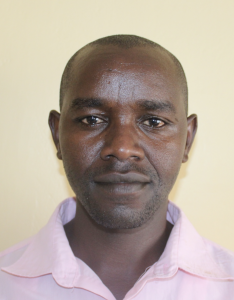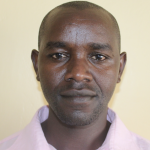Henry Kichwen Spring is located in Koitabut Village of Nandi County.
For people in this community, a normal day starts by getting up early in the morning at 6am and going to their farms. Many people in this community engage in small-scale dairy farming, poultry keeping, cash crop farming such as small tea scale sugar cane plantations, bananas and subsistence farming such as vegetables and cereals of all kinds ranging from maize, beans and ground nuts.
They mainly till their lands in preparation for planting, while others harvest-ready crops from farms. After which, the food is stored for future use and some are taken to the market to be sold. The community members try to balance their budgets so as to meet their daily needs and keep life going. This location borders two counties namely, Vihiga and Nandi with a good road network that links different location between the two counties.
Water
This unprotected spring serves an estimated population of 90 people.
Though the spring has been in existence for a long time, efforts to protect it were always futile. The only hope was their elected leaders, but they have done very little to help them.
During our visit to a school called Kosiage Primary School, one of the teachers invited us to visit the spring and give any advice on a way forward. On arrival, the spring was found to be very open and in need urgent attention to prevent people from drinking the contaminated water.
On our visit to the site, we saw a green mold on the water surface, leaves, and rotten branches. That is a clear indication that the water is not safe for human consumption if used untreated.
The lack of safe water leads to many lives being at risk of getting waterborne diseases like typhoid and cholera.
People use jugs to draw water and pour them into larger containers while others dip their large containers directly into the water to fill up. The gathered water is then stored in the containers in people's homes.
The community members were happy to see us visit their spring and revive their lost hopes and breath life back into them.
With the protection of this spring, many people will be able to access safe and clean drinking water with ease unlike in the previous times when they could only struggle to at least get clean water as little as possible.
Sanitation
The community members have clean compounds, with dishracks and clotheslines often present. The garbage is thrown into the farms and left to decompose and naturally turn into manure.
Also, nearly every household has a latrine. They ensure that there is proper disposal of human waste. Latrines in the community are made of wooden floors, mud walls, iron sheet roofs, and doors of timber joined together.
The provision of sanitation platforms will help to boost the sanitation status of many households who use latrines made of wooden floors which, when wet, makes people slide and fall down while trying to use them.
Here’s what we’re going to do about it:
Training
Community members will attend hygiene and sanitation training for at least two days. This training will ensure participants have the knowledge they need about healthy practices and their importance. The facilitator plans to use PHAST (Participatory Hygiene and Sanitation Transformation), CLTS (Community-Led Total Sanitation), ABCD (Asset-Based Community Development), group discussions, handouts, and demonstrations at the spring. One of the most important topics we plan to cover is the handling, storage, and treatment of water. Having a clean water source will be extremely helpful, but it is useless if water gets contaminated by the time it’s consumed. Handwashing will also be a big topic.
Training will also result in the formation of a committee that will oversee operations and maintenance at the spring. They will enforce proper behavior around the spring and delegate tasks that will help preserve the site, such as building a fence and digging proper drainage. The fence will keep out destructive animals, and the drainage will keep the area’s mosquito population at a minimum.
Sanitation Platforms
On the final day of training, participants will select five families that should benefit from new latrine floors.
Training will also inform the community and selected families on what they need to contribute to make this project a success. They must mobilize locally available materials, such as bricks, clean sand, hardcore, and ballast. The five families chosen for sanitation platforms must prepare by sinking a pit for the sanitation platforms to be placed over. All community members must work together to make sure that accommodations and food are always provided for the work teams.
Spring Protection
Protecting the spring will ensure that the water is safe, adequate and secure. Construction will keep surface runoff and other contaminants out of the water. With the community’s high involvement in the process, there should be a good sense of responsibility and ownership for the new clean water source.
Fetching water is predominantly a female role, done by both women and young girls. Protecting the spring and offering training and support will, therefore, help empower the female members of the community by giving them more time and efforts to engage and invest in income-generating activities.

 Protected Spring
Protected Spring
 Rehabilitation Project
Rehabilitation Project











































